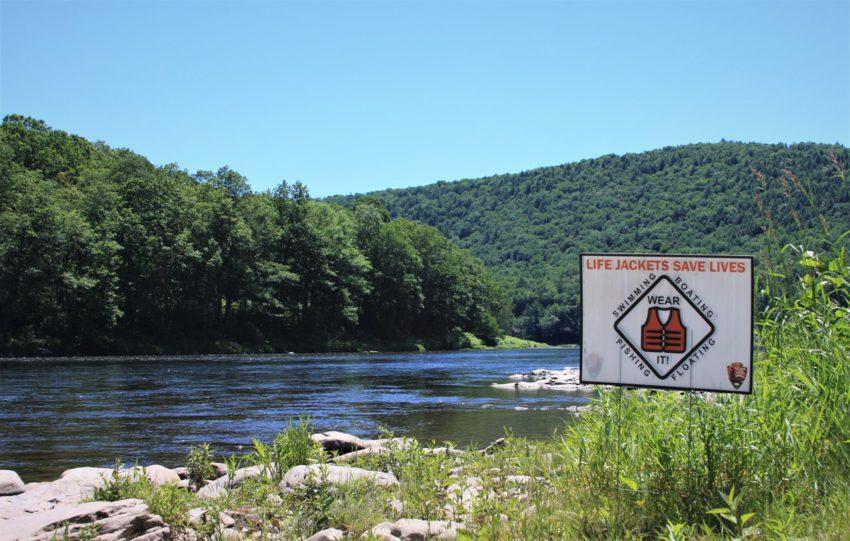A South Jersey man drowned in the Delaware River while swimming off Milford Beach at the Delaware Water Gap in Pennsylvania, officials said Saturday.
About four hours after going missing, divers retrieved the body of 24-year-old Jeysson Ariel Osorio-Reyes, of Jackson Township (Ocean County), NJ, National Park Service officials said.
Osorio-Reyes, according to a witness, was seen swimming around 3:15 p.m. about 75 yards from the shoreline in Pennsylvania before vanishing underwater. His body was found around 7 p.m. Saturday.
The National Park Service was aided in the search by local firefighters and divers, officials said.
The National Park Service advises swimmers to stay within guarded beaches, as the Delaware River often has strong currents, sharp drop-offs, and other conditions that can make the waterway dangerous.
Susie Kaspar, a park ranger for the National Park Service at Upper Delaware Scenic and Recreational River, shared the following river safety reminders:
Always wear a life jacket.
Drowning is the second leading unintentional cause of death in national parks, according to data from the National Parks Service. Wearing a life jacket can help you keep your head above water.
In New York State, children 12 years old or younger must wear a life jacket at all times while in or on the river, and all boats must have one readily accessible life jacket per person.
Fit is important: if the jacket is not securely fastened and snug, it can ride up to your face and hinder your vision. Make sure you have a U.S. Coast Guard approved life jacket. It will have a label containing fit guidance. Since children grow quickly, Kaspar recommends ensuring their life jacket fits before heading out on the water for the season.
If you forget your life jacket, the Parks Service can loan one to you. Loaner life jacket locations can be found on their website. These life jackets are a backup option, so they are limited in quantity and must be returned.
The river may appear calm, but river levels fluctuate quickly, and fast currents can catch “even the best of swimmers off guard.”
Some parts of the river are just inches deep, but there are sudden drop-offs and holes that are up to 15-foot deep, said Kaspar. “It’s not uncommon to just be in shallow water, and then all of a sudden you take a step or two, and then you’re in way over your head in fast moving water,” she warned.
If you find yourself being swept away by a current, do not fight it. Float on your back with your feet facing forward.
You can use your arms to steer yourself. As river levels fluctuate, you’ll eventually be pushed to shore, said Kaspar.
If you see someone in a dangerous situation, do not swim after them. Instead, throw them a rope or something that floats. Call 911 for help.
Jumping into the water to rescue a drowning person can mean risking a double drowning, said Kaspar. A drowning person is “looking to get air, so they will climb on top of you and pull you under,” said Kaspar. “If you’re not prepared to rescue somebody, don’t do it, because it could ultimately end in your death as well.”
Make sure you keep an eye on your family and friends during your outings. A drowning person will be gasping for air, and cannot yell for help.
Call 911 in an emergency. If you see a person drowning, try to reach them with an extended object like a rope or an oar. Throw them something that floats, like a life jacket, a seat cushion or even a water cooler.
Preparedness is key.
Check river conditions and the weather forecast before you go. Call the Upper Delaware River Hotline at (845) 252-7100 for information on river conditions, updated daily.
Tell your friends and family where you’re going, and when you expect to return.
Pack for a longer trip than you’re planning. Unexpected circumstances may cause your trip to be longer than you expected. Bring more food, medication and water than you think you need. Temperatures can change rapidly, so pack some warm layers. “We have more cases of hypothermia in the summer months than we actually do in the winter months,” said Kaspar.
If you have an adult beverage near the river, make sure you mix it with water.
For more resources, go to the National Parks Service website for the Upper Delaware Scenic & Recreational River at nps.gov/upde.
Photo: National Parks Service

